Evolution: a slow genetic change in a population of a species over time; results in new species from existing ones.
- simple to complex
Evidence
1. Fossils: types - petrified
- imprints
- moulds
- casts
- amber-preserved
- frozen
- tar-pits
info about structure, function and behaviour
incomplete record
dating: relative vs. absolute (C14 t1/2= 5700)
index fossils eg. trilobites (500-600 mya)
 |
| Petrified wood |
 |
| Fossilized fish print |
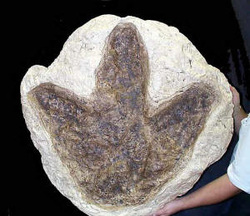 |
| Fossilized footprint |
 |
| Mold of a trilobite tail p |
 |
| Frozen baby mammoth |
 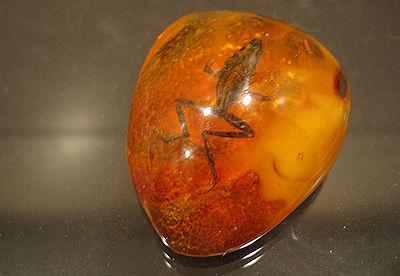 |
| Amber preserved fossils |
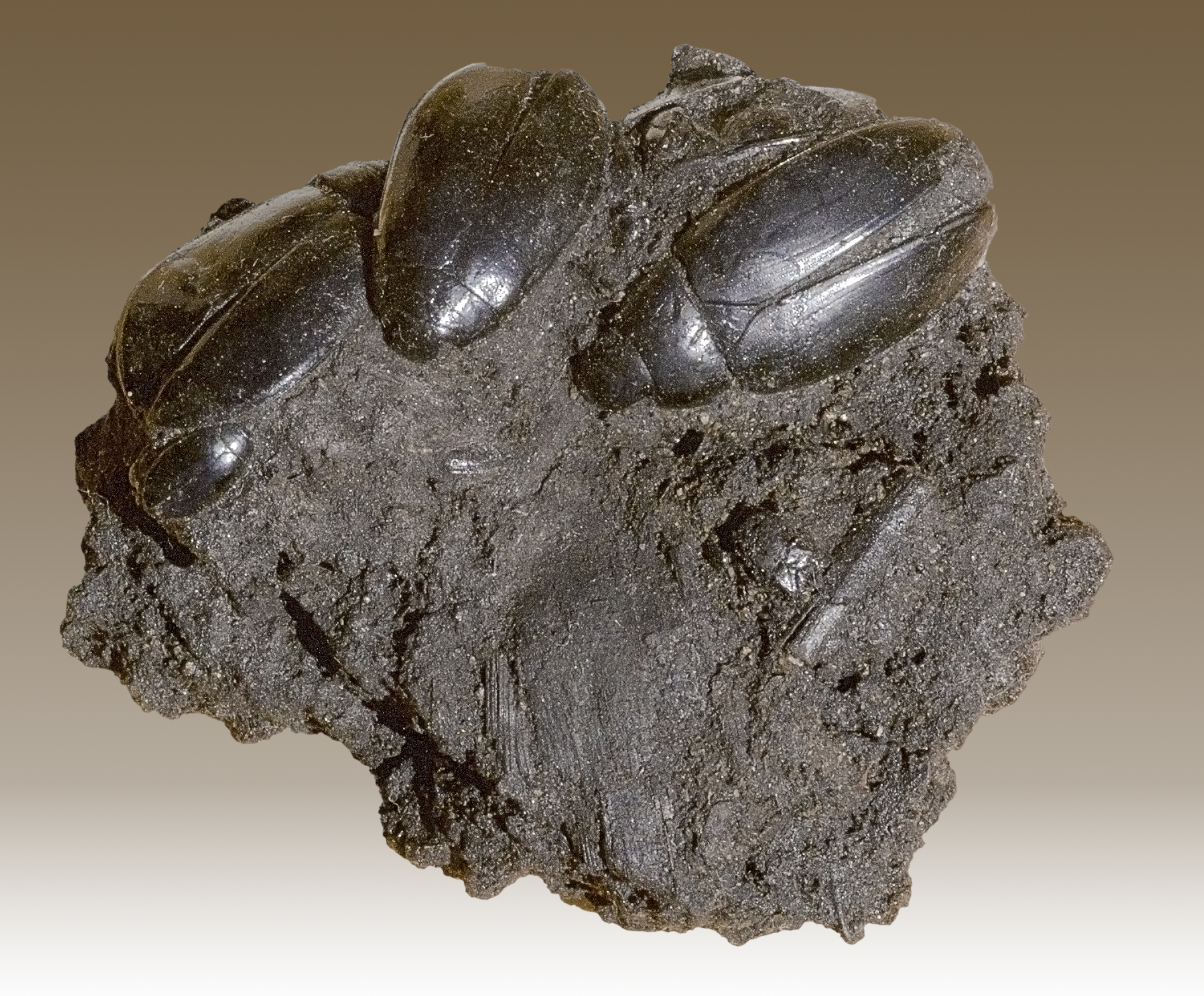 |
| Fossils from tar pits |
(The following is just some additional information that you may find useful, but we didn't cover it in detail:
Geologic Time Scale:
Precambrian (oskor): > 570 mya, 87% of earth’s history. Origin of life: Earth formed 4.6 bya. It was full of volcanos, meteorites. 3.8-3.9bya rocks began to solidify and lithosphere formed into plates (basis of plate tectonics). Primitive atmosphere of H2, NH3, H2O vapour, CH4 and hydrocarbons. As Earth cooled H2O condensed and there were rainstorms, eventually primitive oceans formed (primordial soup) full of dissolved minerals from rocks. 1930’s Oparin proposed the heterotroph hypothesis that sun, lightning and radiation acted on gases and minerals in oceans to produce simple organic molecules. 1953 Miller and Urey tested the hypothesis and it worked. Simple organic molecules then linked together to form more complex molecules and eventually formed the first simple living systems (3.5bya), prokaryotes first heterotrophs then phototrophs (O2 into atmosphere and ozone), 1.8-1.5bya unicellular eukaryotes (endosymbiotic theory), simple multicellular (eg. green algae) 700mya, marine inverts without shells (sponges, jellyfish, worms and echinoderms)
Palaeozoic (okor): 570-248 mya, Cambrian: spread of green algae, more oxygen, thicker ozone, more UV protection, calcified shells, lots of inverts (all the phyla that exist today, plus some), trilobites (haromkareju osrak). Ordovician: reef corals, filter feeders, primitive chordates, earliest vertebrates (jawless fish). Silurean: armour-plated fish, first vertebrates with jaws. Devonian: plants conquered land (psilophytes then lush marshland forests developed), followed by animals (early amphibians from lobe-finned fish, insects and other arthropods) , fish dominated water. Carboniferous: swamp forests, volcanoes, vertical stratification of plants, seedy ferns, gymnosperms, spread of amphibians, radiation of insects (giant bugs), primitive reptiles. Permian: Pangea, Swamp forests disappeared, more gymnosperms (gingkoes), drier climate, decrease in amphibians, reptile radiation, mass extinction of marine invertebrates.
Mesozoic (kozepkor): 248 – 66 mya, Pangea broke apart, by the end, modern day continents could be recognized, Triassic: present-day Hungary was a sea, conifers, new radiation of aquatic inverts, eg. ammonites, early mammals, dinosaurs, Jurassic: ancestor of today’s bony fish appeared, dinosaurs increased in size (eg. brontosaurus), flying vertebrates (pterosaurus), Cretaceous: formation of Alps, Carpathians, Caucasus and Himalayas, primitive angiosperms, flowering plants, pollinator insects, specialized dinosaurs (triceratops, tyrannosaurus, ichthyosaurs), insectivorous and rodent-like mammals, great extinction of flora and fauna (meteorite crash), provided empty habitats for angiosperms, birds and mammals
Cenozoic (újkor): < 66 mya, Tertiary: modern gymnosperms, angiosperms, deciduous forests, marsupials, placentals, Quaternary: last 3 million years, glaciation, appearance of man (early humans: 1mya, modern human 200 000 ya) )
2. Comparative anatomy: Homologous structures - structures that are now different, but derived from the same origin
 |
| Homologous structures |
Vestigial structures - structures that still exist, but have lost their original function (eg. appendix)
 |
| Vestigial skeletal structures in whales |
Analogous structures - structures that look similar and serve the same function, but developed from different origins (eg. wings of insects and birds)
 |
| Analogous structures - the fin of a fish, wing of a penguin and flipper of a dolphin |
3. Embryological development: “ontogeny recapitulates phylogeny” (torzsfejlodes) - that the embryological developement of different species initially looks the same and differs as development progresses
 |
| Share common features that disappear later |
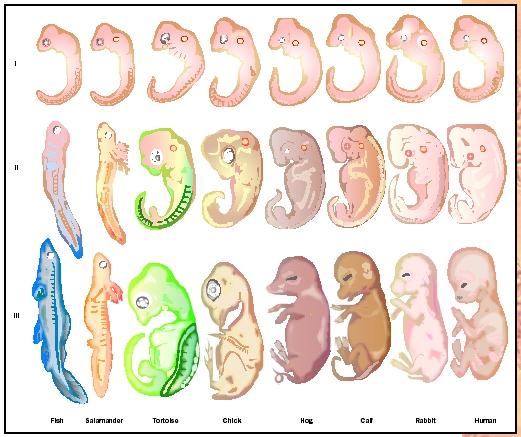 |
| Initial stages appear very similar |
4. Biogeography: Distributions of organisms in different geographical areas. Closely related organisms are usually found in areas that are geographically close to each other.
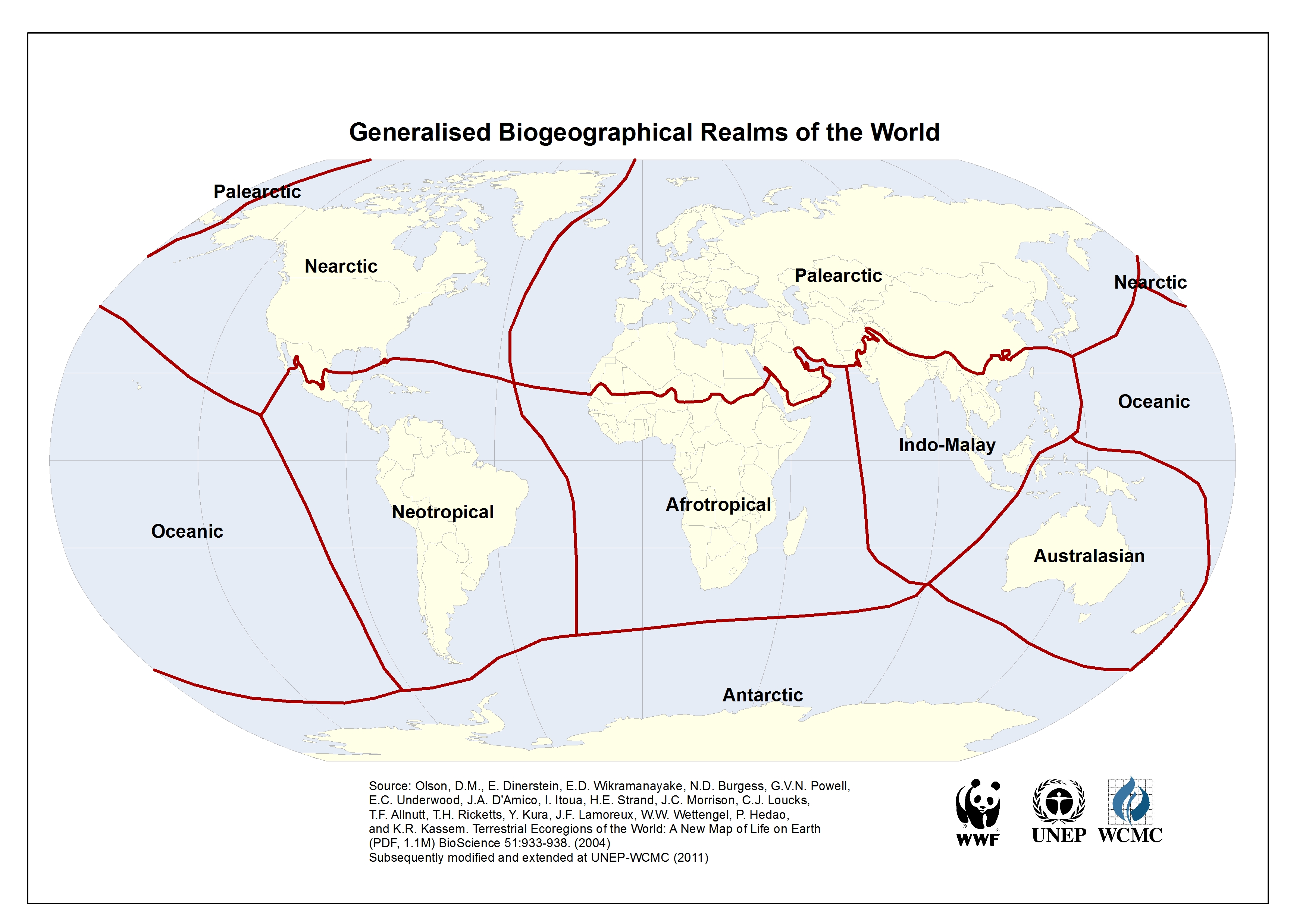 |
5. Comparative biochemistry and molecular biology: DNA and ATP, genetic codes. The more similar the genetics and biochemistry of species, the more closely related they are.
 |
Theories:
1. Lamarck’s Theory of Use and Disuse (1809) is the idea that an organism can pass on characteristics that it acquired during its lifetime to its offspring (also known as heritability of acquired characteristics or soft inheritance)
 |
2. Darwin’s Theory of Natural Selection (Wallace also came up with similar, Darwin presented with him)
1. Variation within the traits in a population
2. Overproduction of offspring
3. Competition – survival of the fittest, can lead to speciation
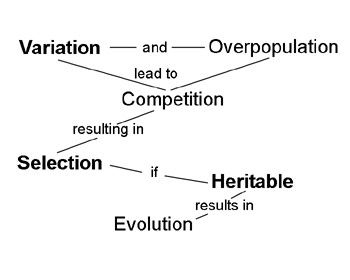 |
3. The Synthetic Theory
-Darwin + genetics
-populations evolve
-mutations are a source of variation
-can be modeled using population genetics:
-based on gene pool (all alleles of genes in all ind. in pop.)
-if we know genotypes, we can calculate allele frequency
eg. 1 gene with 2 alleles (A and a)
A = p, a = q
p + q = 1
If 64% of the population is AA, 32% of the population is Aa and 4% of the population is aa, then we calculate the frequency of the A allele as being p
p = AA + ½ Aa
p =0.64 + 1/2(0.32)
p = 0.8
If 80% of the population has A, then q = 1-p, q = 0.2
A (p)
|
a (q)
|
|
A (p)
|
AA (p2)
|
Aa (pq)
|
a (q)
|
Aa (pq)
|
aa (q2)
|
A (0.8)
|
a (0.2)
|
|
A (0.8)
|
0.64
|
0.16
|
a (0.2)
|
0.16
|
0.04
|
p2 + 2pq + q2 = 1
This is the Hardy-Weinberg principle which states that in an ideal population the alleles and genotypes remain constant from generation to generation.
This is the Hardy-Weinberg principle which states that in an ideal population the alleles and genotypes remain constant from generation to generation.
In the example, the frequencies haven’t changed in the 2nd generation. This is a situation of genetic equilibrium. When a population is stable there is no evolution: RARE, because of the following factors.
- mutations
- gene flow: migrations
- genetic drift: alteration of genetic equilibrium by chance processes, eg. founder effect. In other words:
Factors of Evolution (these all occur at the population level)
Factors of Evolution (these all occur at the population level)
1. Mutations: can be beneficial, neutral or negative, even if not beneficial it may be kept in the population and passed on (if not lethally harmful). If environmental conditions change, some neutral or harmful mutations can become beneficial (and vice versa). Mutations occur in individuals, but the evolutionary effect is measured at a population level.
2. Gene flow: migration. Natural populations are rarely completely isolated. Decreases variation between populations that arise from other factors.
3. Genetic drift: alteration of the genetic equilibrium by chance processes, 3 typical situations include: 1 - constantly small population, 2 - bottleneck effect, 3 - founder effect
4. Natural selection: formulated by Darwin. High potential reproducibility limited environmental carrying capacity gives the real reproducibility by limiting the numbers of individuals that survive to adulthood and reproduce. This is the struggle for existence or "survival of the fittest". The chance of survival depends on the variation that the individuals have inherited, the more adaptive a trait, the better the chance of survival. The genetic aptitude or fitness (genetikai ratermettseg) measures how successfully genes of certain traits are passed on to the offspring. It ranges from 0 to 1. 1 is an ideal Hardy-Weinberg distribution, or the probability of the allele in the next generation is the same as in the parental population. Over time, individuals with traits that have a low genetic aptitude die out and thus the allele frequency in the population changes.
Types of Selection
1. Stabilizing selection: eliminates extremes. Suggests a stable environment that reduce phenotypic variation by favouring the survival and reproduction of those best suited to it. Eg. Length of grass blade
2. Directional selection: one extreme form is favoured. Usually occurs when a population meets with new environmental conditions, either because of change or migration. Eg. antibiotic resistance in bacteria, pepper moth colouration
3. Segregating/Disruptive selection: Both extremes are favoured, the intermediate form is not. Usually occurs when there has been a rapid change in an environment and a population has been split and separated (eg. flood, volcano) and can no longer interbreed.
Adaptation
Any trait that aids the chances of survival and reproduction of an organism. This is a genetic change, if it is simply a change due to the environment then it is called modification.
Eg. height of plants according to altitude – yarrow (cickafark)
- structural: height, thorns, mimicry (bee orchid), camouflage
-physiological: affects metabolism (eg. antibiotic resistance)
-behavioural: courtship
Speciation
Is the result of changes in the genetic pool. When selection occurs for changes that make the species a better fit for its environment, it is called adaptive evolution. Mutation, migration and genetic drift result in changes that aren't the result of adapting to the environment, therefore these are examples of non-adaptive evolution. Speciation can only occur when interbreeding or the production of fertile offspring is prevented, therefore it requires permanent isolation between populations that are exhibiting microevolution (changes in allelic frequencies).
Types of speciation
a. Geographic isolation – physical barrier eg. mountain (snails), river, desert
b. Ecological isolation – populations occupy same area but different habitats.
c. Reproductive isolation – change in repro organ structure, repro periods eg. European hedgehog (subspecies), courtship behaviour (also called behavioural isolation)
d. Genetic isolation – sperm unable to fertilize egg or embryo is non-viable or offspring is sterile, usually the result of different chromosome numbers; polyploidy speciation (fastest form of speciation)
Patterns of evolution
1. Divergent evolution: species become more different, less alike as they adapt to their environments (adaptive radiation). Common ancestry is indicated by homologous organs, eg. Darwin’s finches (13 species)
2. Convergent evolution: distantly related organisms develop similar traits to cope with similar habitats (eg. fish and dolphin, cacti and euphorbias). Here we see analogous organs.
3. Coevolution: Two or more species evolve in response to each other through cooperation or competition. Eg. Flowers and their pollinators
Rate of evolution
Gradualism: slow steady, small changes build-up and species develop gradually. Supported by fossil record of horses.
Punctuated equilibrium: Species remain constant for long periods then suddenly (50-100 thousand years) a new species is formed. Step-like speciation is supported by giraffe fossil record.
Human Evolution (Anthropology)
Primate evolution began about 65 million years ago. Primates developed from a rodent-like ancestor that lived in trees.
Primates share certain characteristics:
-opposable thumb
-forward-facing eyes (binocular vision)
-flexible shoulder and rotating forelimb
-decreased and diversified dentition
-increased body and brain size
Fossil showing a distant level of similarity to humans are classified as homonoid. The homonoid line includes Rudapithecus (also known as Dyopithecus), which appeared about 15 million years ago. Such a fossil was found at Rudabánya and is know as "Rudi". It lived about 10 million years ago.
Fossils with greater similarity are called homonid. Early homonid fossils have been found primarily in southern and eastern Africa, such as in the Oduvai Gorge and the Omo river valley. Many researchers have undertaken excavations in the area, but particularly notable is the Leakey family (Louis Leakey, Mary Leakey and their son, Richard).
Australopithecus was a homonid lineage in Africa that appeared about 5 million years ago and died out about a million years ago. There were many species of Australopithecus, one of the most "famous" being "Lucy" (A. afarensis), one of the most complete fossils ever found by Donald Johanson in 1974. Australopithecus had a large skull (500 cubic cm), was 110-140cm tall, was bipedal and used tools.
The Homo lineage are where modern humans evolved and also included other species.
Homo habilis appeared about 200 million years ago, had a brain size of about 700 cubic cm, made tools and exhibited social organization.
Homo erectus appeared about 1.5 million years ago, had a brain size of 1000 cubic cm, a relatively flat face and is thought to have existed in a hunter-gatherer society. This species mastered the use of fire about 600 000 years ago. They spread from Africa into Eurasia and a fossil found by Eugene Dubois in 1891, was called "Java Man" and was long though to be the link between apes and humans. This species died out about 100 000 years ago.
Homo neanderthalensis or Neanderthal Man lived from about 230 000 years ago, til 30 000 years ago. It had a brain size of 1400 cubic cm and was about 160cm tall. Their bones were thick and strong, with strong muscles. They exhibited a high level of social organization, with cave paintings, burials in back areas of caves and may have even planted flowers(??). They were capable of speech.
Homo sapiens or modern man appeared in the fossil record about 200 000 years ago. They lived at the same time as Neanderthal man, but most likely left Africa later. The spread of modern man is considered to be about 38 000 years ago (during a mini-Ice Age). Cro-magnon man is an early modern human that was found in Europe. It exhibited the double S spinal curvature and a pointed chin that allows for muscle attachments that allow for clear speech. They made tools from rocks, wood and bone and exhibited a very high level of culture as shown by the Venus of Willendorf and bone whistles that have been found.
Go to this link for a bit more info!
Primate evolution began about 65 million years ago. Primates developed from a rodent-like ancestor that lived in trees.
Primates share certain characteristics:
-opposable thumb
-forward-facing eyes (binocular vision)
-flexible shoulder and rotating forelimb
-decreased and diversified dentition
-increased body and brain size
 |
Fossil showing a distant level of similarity to humans are classified as homonoid. The homonoid line includes Rudapithecus (also known as Dyopithecus), which appeared about 15 million years ago. Such a fossil was found at Rudabánya and is know as "Rudi". It lived about 10 million years ago.
Fossils with greater similarity are called homonid. Early homonid fossils have been found primarily in southern and eastern Africa, such as in the Oduvai Gorge and the Omo river valley. Many researchers have undertaken excavations in the area, but particularly notable is the Leakey family (Louis Leakey, Mary Leakey and their son, Richard).
Australopithecus was a homonid lineage in Africa that appeared about 5 million years ago and died out about a million years ago. There were many species of Australopithecus, one of the most "famous" being "Lucy" (A. afarensis), one of the most complete fossils ever found by Donald Johanson in 1974. Australopithecus had a large skull (500 cubic cm), was 110-140cm tall, was bipedal and used tools.
The Homo lineage are where modern humans evolved and also included other species.
Homo habilis appeared about 200 million years ago, had a brain size of about 700 cubic cm, made tools and exhibited social organization.
Homo erectus appeared about 1.5 million years ago, had a brain size of 1000 cubic cm, a relatively flat face and is thought to have existed in a hunter-gatherer society. This species mastered the use of fire about 600 000 years ago. They spread from Africa into Eurasia and a fossil found by Eugene Dubois in 1891, was called "Java Man" and was long though to be the link between apes and humans. This species died out about 100 000 years ago.
Homo neanderthalensis or Neanderthal Man lived from about 230 000 years ago, til 30 000 years ago. It had a brain size of 1400 cubic cm and was about 160cm tall. Their bones were thick and strong, with strong muscles. They exhibited a high level of social organization, with cave paintings, burials in back areas of caves and may have even planted flowers(??). They were capable of speech.
Homo sapiens or modern man appeared in the fossil record about 200 000 years ago. They lived at the same time as Neanderthal man, but most likely left Africa later. The spread of modern man is considered to be about 38 000 years ago (during a mini-Ice Age). Cro-magnon man is an early modern human that was found in Europe. It exhibited the double S spinal curvature and a pointed chin that allows for muscle attachments that allow for clear speech. They made tools from rocks, wood and bone and exhibited a very high level of culture as shown by the Venus of Willendorf and bone whistles that have been found.
Go to this link for a bit more info!
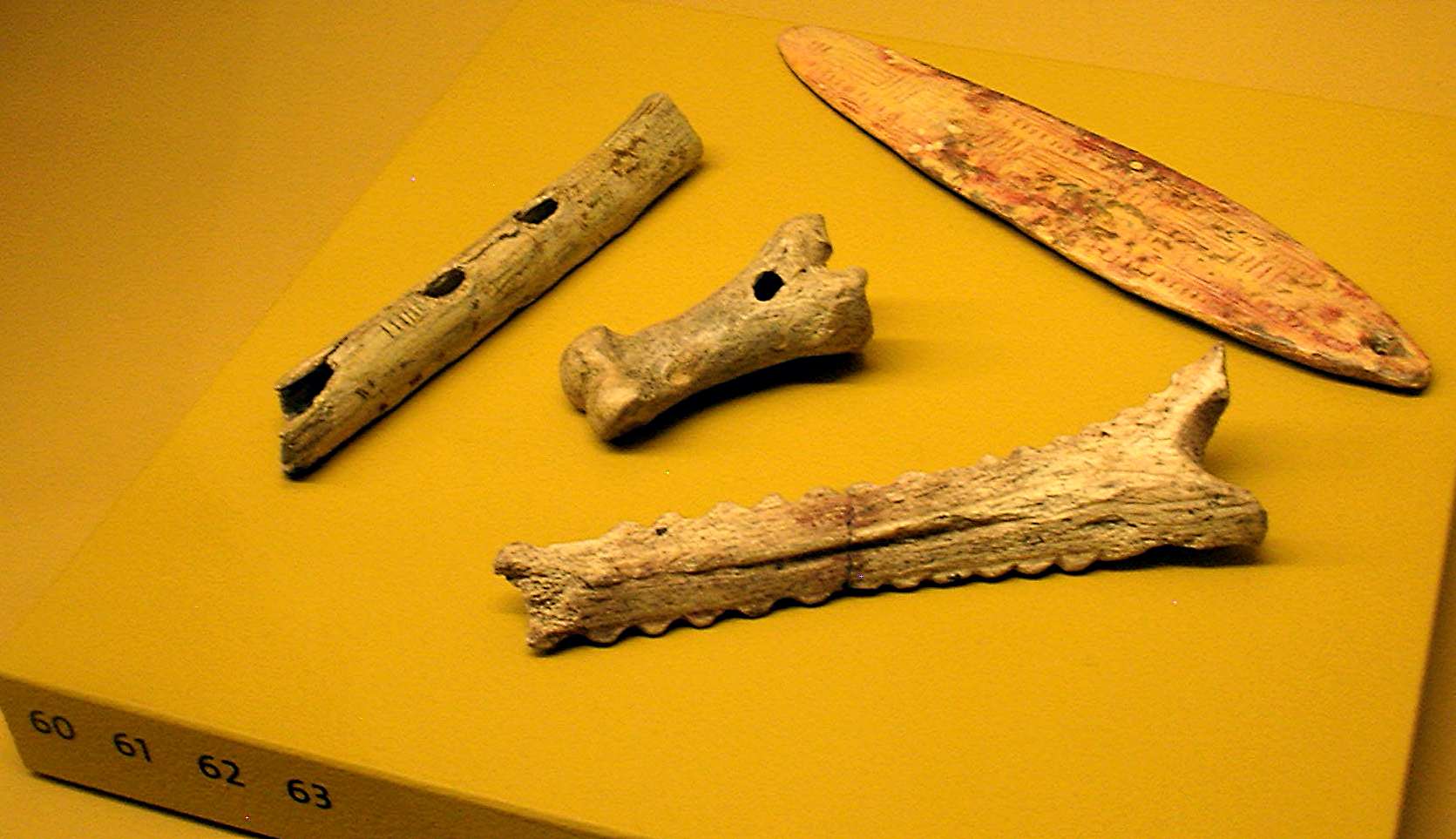 |
| Bone whistles |
 |
| Venus of Willendorf |
 | ||||||||||||
No comments:
Post a Comment